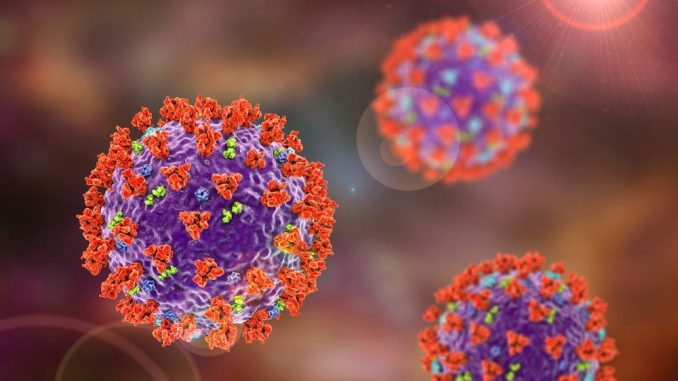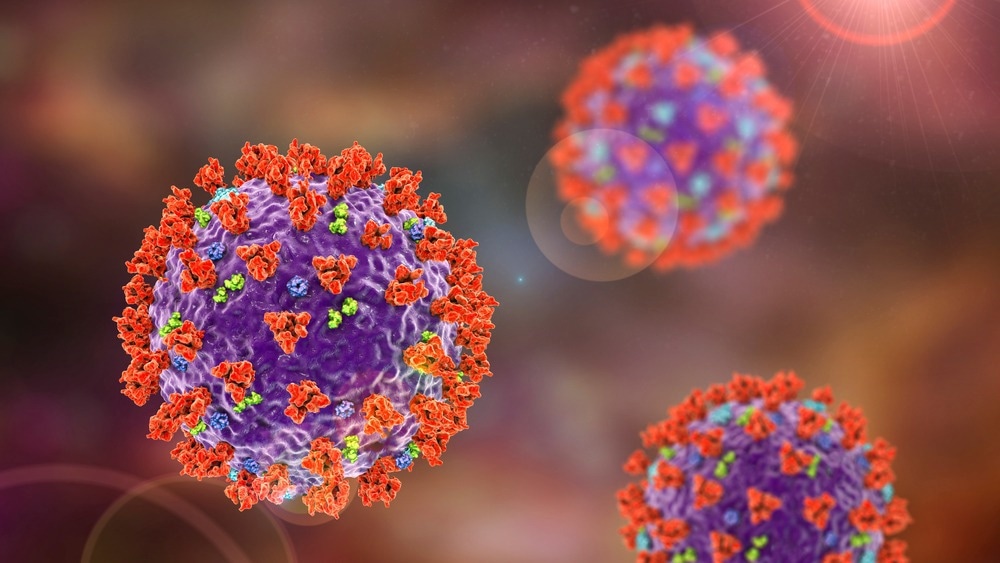

 *Important notice: bioRxiv publishes preliminary scientific reports that are not peer-reviewed and, therefore, should not be regarded as conclusive, guide clinical practice/health-related behavior, or treated as established information.
*Important notice: bioRxiv publishes preliminary scientific reports that are not peer-reviewed and, therefore, should not be regarded as conclusive, guide clinical practice/health-related behavior, or treated as established information.
In a recent study posted to the bioRxiv* server, researchers reported that some monoclonal neutralizing antibodies (nAbs) directed against distinct receptor-binding domain (RBD) epitopes nested inside the severe acute respiratory syndrome coronavirus 2 (SARS-CoV-2) spike (S) could substitute angiotensin-converting enzyme 2 (ACE2) as a receptor and support fusion between viral and host cell membranes facilitating viral infectivity.

Background
Antibodies eBook

It provides a possible rationalization of how SARS-CoV-2 infects nonpermissive cells (e.g., blood monocytes) in humans with coronavirus disease 2019 (COVID-19). Yet, some aspects of COVID-19 pathogenesis and SARS-CoV-2 entry mechanisms remain unclear. For instance, how antibody-decorated viruses cross the endosomal membrane to enter the cytosol of the host cells and how ACE2 induces S subunit 1 (S1) dissociation. ACE2-liganded and unliganded S trimers are structurally identical in the RBD-up conformation.
Nonetheless, it is a concern that natural infection and vaccination-induced nAbs cause antibody-dependent enhancement (ADE) of SARS-CoV-2 infectivity and virulence. Studies have shown that in dengue, fragment crystallizable-gamma receptor (Fc-γR)-mediated infection of leukocytes facilitates ADE.
About the study
In the present study, researchers investigated whether anti-SARS-CoV-2 S monoclonal antibodies (mAbs) in a membrane-bound form could substitute ACE2 and directly function as an alternative receptor for SARS-CoV-2. They chose eight S RBD-specific mAbs, viz., C63C8, G32B6, C12A2, S2H97, C63C7, C12C9, and C81D6 and SP1-77, with the first seven isolated from COVID-19 convalescents and the last one retrieved from a humanized mice.
Further, they used a cell-cell fusion assay to evaluate whether these eight mAbs could support membrane fusion in the presence of the high-affinity Fc-γRI. Using the same assay, they also detected fusion activities in some polyclonal immunoglobulin G (IgG) antibodies purified from the serum of vaccinated convalescents or convalescents from an early COVID-19 pandemic phase. More specifically, they pursued evidence of whether antigen-binding (Fab) fragments of an S-specific IgG could replace the ACE2 receptor function.
Intriguingly, receptor-like mAbs could function as a complex of their soluble IgG form with Fc-γRI, together called a chimera. Whether an antigen binds a fragment of the transmembrane ACE2 domain or a membrane-bound B cell receptor, ACE2 and its interactions with the S trimers are dispensable for SARS-CoV-2 entry. However, it is yet unknown whether the antibody-Fc-γRI complex facilitates endocytosis of the attached virions or the antibody substitutes ACE2 as an entry receptor directly.
Study findings
The researchers made a remarkable finding based on merely eight monoclonal nAbs/IgGs they tested. They noted that four (of the six RBD-directed antibodies) worked efficiently as a host entry receptor, like ACE2, even against the authentic SARS-CoV-2. They did so when captured by Fc-γRI on the surfaces of target host cells, independent of ACE2.
The researchers also detected this S-catalyzed membrane-fusion activity in purified polyclonal IgGs or serum samples from some convalescents. However, future studies are warranted to determine the clinical significance of these receptor-like antibodies in studies with a greater sample size. Nonetheless, this new information fills a longstanding gap in understanding the COVID-19 pathogenesis.
Another significant observation was that the RBD and ACE2 were unnecessary for triggering the S protein to undergo conformational changes. Moreover, these receptor-like monoclonal IgGs targeted three distinct RBD epitopes; for instance, C63C8 targeted the exposed surface of the RBD-down conformation, while S2H97 targeted the obscure site visible in the RBD-up conformation. Two other nAbs, G32B6 and C12A2, targeted the ACE2-binding site. However, the researchers could not work out the mechanism employed by these nAbs to achieve the entry receptor’s function.
The finding that such receptor-like nAbs exist also explains how SARS-CoV-2 invades previously considered nonpermissive cells, such as lung macrophages and blood monocytes, which express no or low ACE2 levels in a membrane-bound form. In this way, they create conditions conducive for SARS-CoV-2 spread to other non-respiratory tissues. Thankfully, these cells do not support productive SARS-CoV-2 infection, yet SARS-CoV-2 reinfection increases all-cause mortality and poor health outcomes. Future studies should explore these aspects of COVID-19 pathogenesis further.
Overall, all receptor-like antibodies identified in this study were neutralizing in nature and potently inhibited SARS-CoV-2 infection in the water-soluble form.
Finally, the researchers noted that the receptor-like antibodies might contribute little towards the transmission of new SARS-CoV-2 variants, e.g., the Omicron subvariants. They evade all nAbs (receptor or non-receptor-like) as they have highly mutated S proteins. Also, there is a shortage of epidemiological evidence for ADE in the vaccinated population with or without prior COVID-19 history.
Conclusions
The study results suggested that receptor-like antibodies might expand the SARS-CoV-2 tropism even to nonpermissive cell types. Thus, they have important implications for COVID-19 pathogenesis.
*Important notice
bioRxiv publishes preliminary scientific reports that are not peer-reviewed and, therefore, should not be regarded as conclusive, guide clinical practice/health-related behavior, or treated as established information.

 *Important notice: bioRxiv publishes preliminary scientific reports that are not peer-reviewed and, therefore, should not be regarded as conclusive, guide clinical practice/health-related behavior, or treated as established information.
*Important notice: bioRxiv publishes preliminary scientific reports that are not peer-reviewed and, therefore, should not be regarded as conclusive, guide clinical practice/health-related behavior, or treated as established information.
- Preliminary scientific report. Kibria, M. et al. (2023) "Antibody-mediated cell entry of SARS-CoV-2". bioRxiv. doi: 10.1101/2023.02.20.529249. https://www.biorxiv.org/content/10.1101/2023.02.20.529249v1
Posted in: Medical Science News | Medical Research News | Disease/Infection News
Tags: ACE2, Angiotensin, Angiotensin-Converting Enzyme 2, Antibodies, Antibody, Antigen, Assay, B Cell, Blood, Cell, Coronavirus, Coronavirus Disease COVID-19, covid-19, Enzyme, Immunoglobulin, Membrane, Mortality, Omicron, Pandemic, Protein, Receptor, Respiratory, SARS, SARS-CoV-2, Severe Acute Respiratory, Severe Acute Respiratory Syndrome, Syndrome

Written by
Neha Mathur
Neha is a digital marketing professional based in Gurugram, India. She has a Master’s degree from the University of Rajasthan with a specialization in Biotechnology in 2008. She has experience in pre-clinical research as part of her research project in The Department of Toxicology at the prestigious Central Drug Research Institute (CDRI), Lucknow, India. She also holds a certification in C++ programming.
Source: Read Full Article